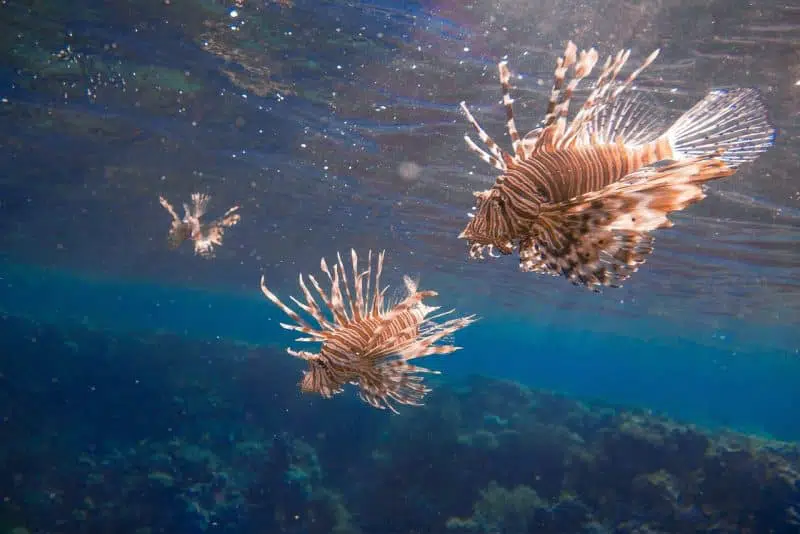Step into the “Animals that Start with S” world! Surprisingly, many creatures bear names beginning with the letter ‘S’, perhaps more than you’ve ever imagined.
These animals come from different parts of the world and many different habitats. Explore this list to learn more about these animals that start with the letter S.
Overview of Animals that Start with S
1. Saanen Goat
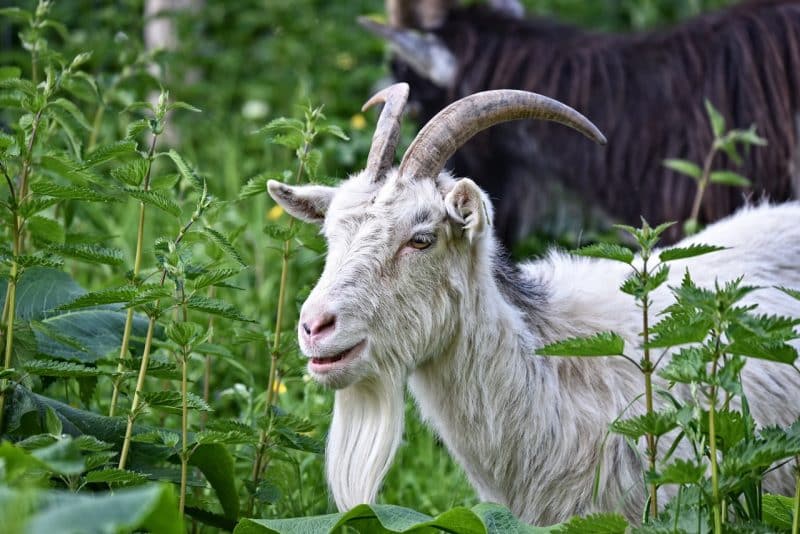
| Scientific Name | Capra aegagrus hircus |
| Where It Lives | Worldwide |
| What It Eats | Fresh pasture, hay |
| Conservation Status | Least Concern (LC) according to the IUCN Red List |
Fun Fact: The Saanen Goat is also the most productive Swiss dairy goat, and the Swiss have some of the most productive Goat breeds in the world.
The Saaned Goat has its origins in Switzerland, where it was bred as a dairy goat. Today it is still the most productive dairy goat breed in the world.
These dairy goats are the largest breed of Swiss goat, standing at an average height of 35 inches. They have short-haired white coats, sometimes with pigmentation patches, and can have horns or not. Due to their light skin, these goats can’t tolerate harsh sun well and keep to the shade. They produce high yields of milk per year, and the average fat content of the milk is about 4%. The Saaned goat likes to keep to a routine.
2. Salamander
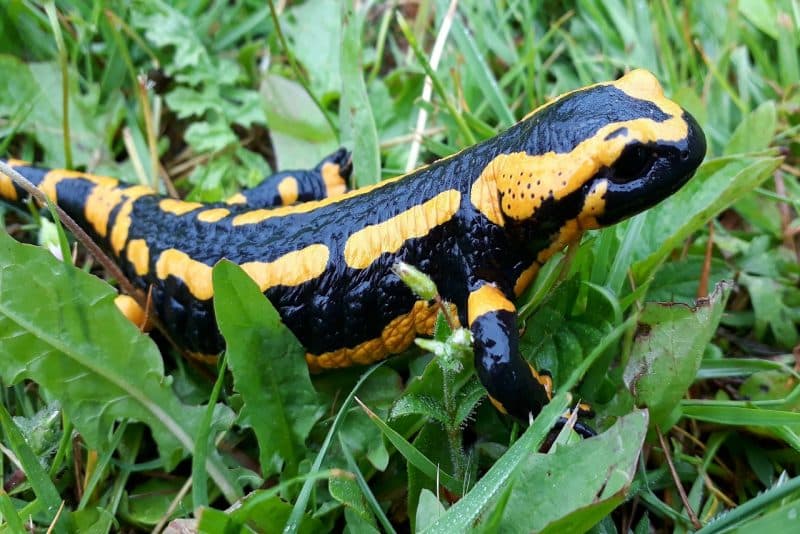
| Scientific Name | Caudata |
| Where It Lives | Northern Hemisphere |
| What It Eats | Worms, snails, insects |
| Conservation Status | Wide range of conservation statuses between the species |
Fun Fact: Salamanders have a high healing rate and regenerate lost limbs.
Salamanders are a group of about 740 species of amphibians that look like lizards. These long-tailed reptiles are most often found in damp woodlands and freshwater areas in the Northern Hemisphere, with about 30% of the species in North America.
These animals absorb water through their skin to hydrate and have a slime-like coating on their skin – making them hard to grasp!
3. Salmon
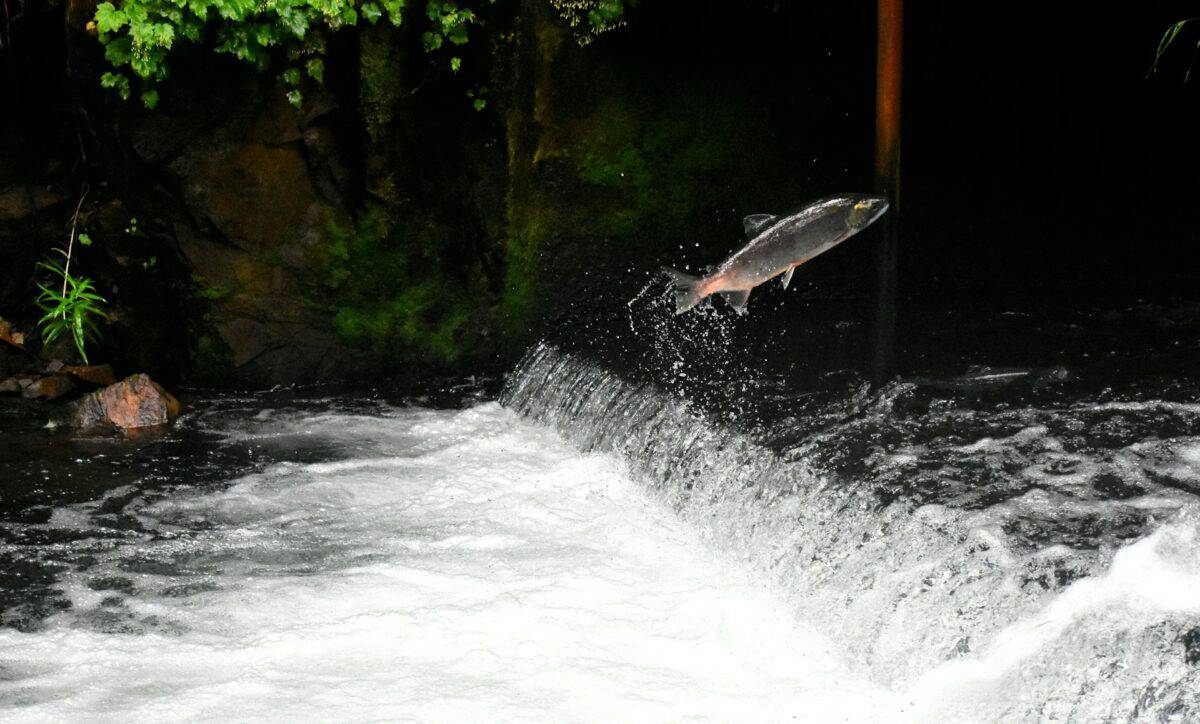
| Scientific Name | Salmonidae |
| Where It Lives | North Atlantic and North Pacific basins |
| What It Eats | Insects, fish, shrimp, fish |
| Conservation Status | Least Concern (LC) according to the IUCN Red List |
Fun fact: Salmons can swim up to 900 miles upstream and leap small waterfalls to get to their breeding waters.
Salmon are a group of ray-finned fishes that hatch and spend their younger years in freshwater sources, and their adult lives in the North Atlantic and Pacific Oceans.
These interesting fish return to freshwater water sources to reproduce and lay their eggs. Old folklore say that salmon return to their own spawning grounds to reproduce, and research has shown this to be true!
4. Salmon Shark
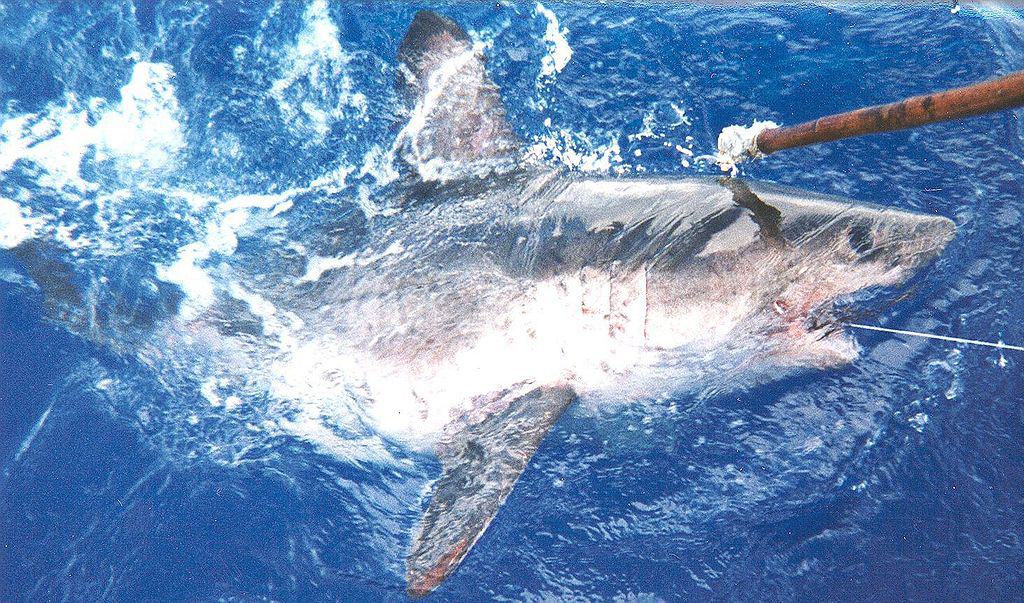
| Scientific Name | Lamna ditropis |
| Where It Lives | Northern Pacific Ocean |
| What It Eats | Squid, herring, salmon |
| Conservation Status | Least Concern (LC) according to the IUCN Red List |
Fun Fact: Salmon sharks can regulate the temperature of their stomach.
Salmon sharks are a mackerel shark species and can be found in the Pacific Ocean.
The salmon sharks are small in size and feed on squid, herring, and of course, salmon. These sharks are usually grey or black, with lighter undersides. These incredible sharks are one of only a few other shark species that are able to regulate their body temperature through homeothermy.
5. Sand Crab

| Scientific Name | Emerita |
| Where It Lives | Worldwide |
| What It Eats | Plankton, dinoflagellates |
| Conservation Status | Least Concern (LC) according to the IUCN Red List |
Fun Fact: Sand crabs only move backward!
The sand crab is a small crustacean that is usually found, you guessed it, on beaches across the globe and it is well-adapted to life in the sand.
These crabs spend the majority of their time burrowed in beach sand, with only their eyes sticking out! If they do find themselves in the water, they tread water with their back legs. Although many of them can be seen on the beach at a time, these are solitary animals spending their time alone, except for mating season of course!
6. Satanic Leaf-tailed Gecko
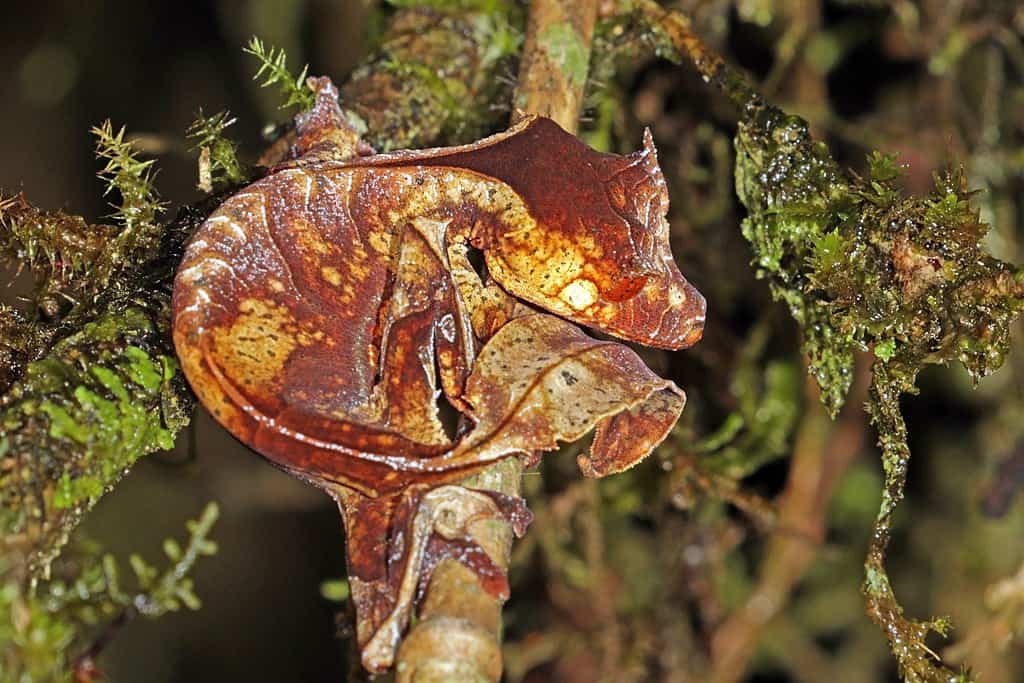
| Scientific Name | Uroplatus phantasticus |
| Where It Lives | Madagascar |
| What It Eats | Insects, small rodents |
| Conservation Status | Least Concern (LC) according to the IUCN Red List |
Fun Fact: The Leaf-tailed gecko doesn’t just look like a leaf; It also hangs from branches like one.
The Satanic Leaf-tailed gecko is native to Madagascar where they inhabit the tropical forests of the island.
This animal is a beautiful example of the phenomenon of camouflage in nature. It looks exactly like a dying leaf of various colors. These solitary, tree-living creatures rest during the day and hunt for insects during the night. Not only do they avoid predators with their phenomenal camouflage skills, but they can also flatten their bodies to not make shadows!
7. Sawfish
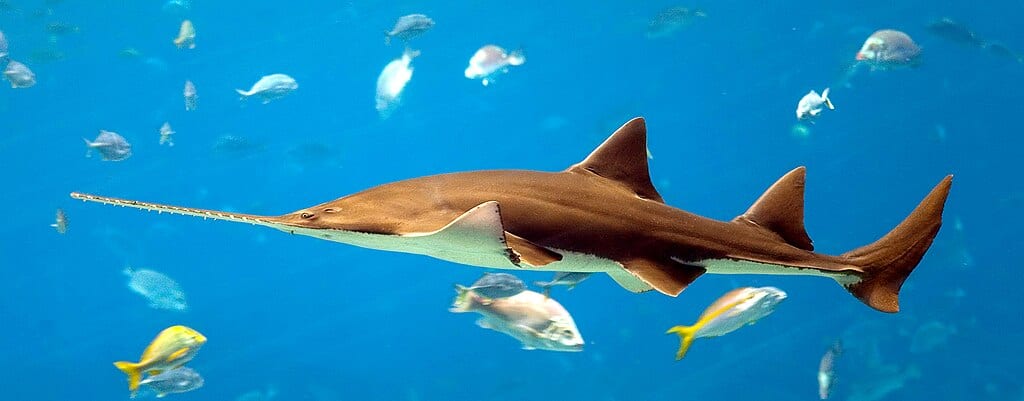
| Scientific Name | Pristidae |
| Where It Lives | Atlantic, Pacific and Indo-Pacific Oceans |
| What It Eats | Atlantic, Pacific, and Indo-Pacific Oceans |
| Conservation Status | Critically Endangered (CR) according to the IUCN Red List |
Fun Fact: Sawfish use their rostra to detect the electric fields of nearby fishes.
The odd-looking sawfish species is adaptable to various water saline levels and can be found across the world in tropic and subtropic waters, and sometimes even in freshwater.
The most distinctive feature of these fish is their rostrum— the saw-like projection on their faces. It is an extension of their skulls, consisting of cartilage and skin. Contrary to popular belief, they do not split things in half with it!
8. Scarlet Kingsnake
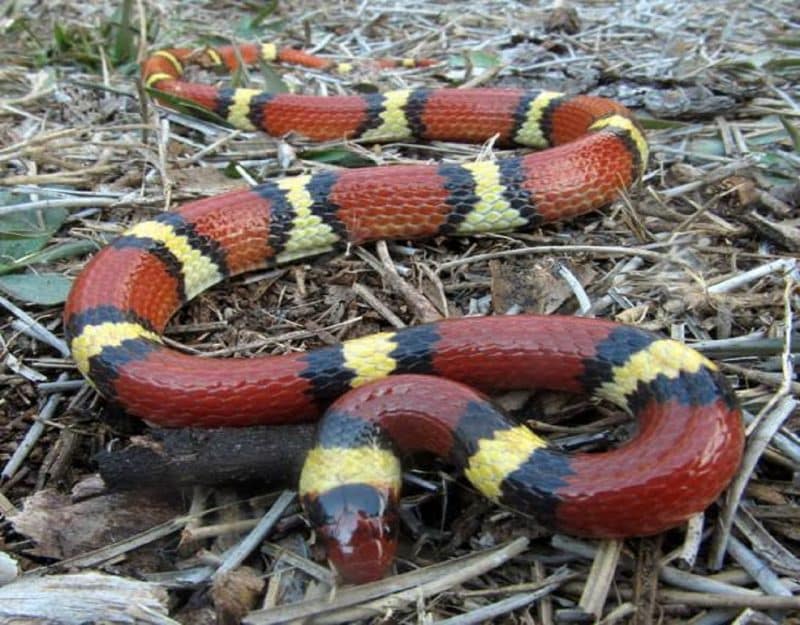
| Scientific Name | Lampropeltis elapsoides |
| Where It Lives | United States |
| What It Eats | Small reptiles, mice, rats, birds, bird eggs |
| Conservation Status | Least Concern (LC) according to the IUCN Red List |
Fun Fact: The Scarlet Kingsnake is not venomous, despite its brightly colored skin.
Scarlet Kingsnakes live in pine flatwoods and savannas, cultivated fields, hydric hammocks, prairie and urban areas in Eastern and Southeastern USA.
These nonvenomous snakes are characterized by their distinctive color pattern, however, these yellow stripes only start to appear at around 3 months of age! These solitary snakes live underground and avoid human interaction at all cost. If they feel any sense of danger they flee to safety. Females lay their eggs in rotting wood or bury them in the ground for safety. Once the baby snakes are born, they are immediately independent and take the world on by themselves.
9. Scimitar Oryx
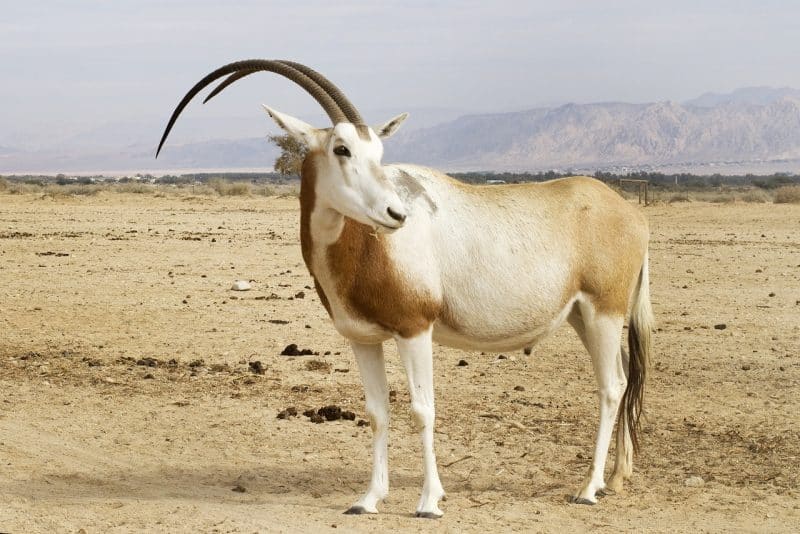
| Scientific Name | Oryx dammah |
| Where It Lives | North Africa |
| What It Eats | Grass, herbs, foliage, plants, roots, fruit |
| Conservation Status | Extinct in the Wild (EW) according to the IUCN Red List |
Fun Fact: These animals can survive months to years without drinking a drop of water.
The Scimitar Orynx once roamed the deserts, semi-deserts and grassy steppes of North Africa. Today, however, they are extinct in the wild and are only bred in captivity in reserves. Their decline was due to climate change and hunting.
The horns of the Scimitar Oryx are long and curved, looking like the weapon of the same name. These animals are well adapted to their dry habitats, with their large flat hooves that can navigate the sand of these dry areas easily, and their ability to go without water for up to 10 months.
10. Scorpion Fish
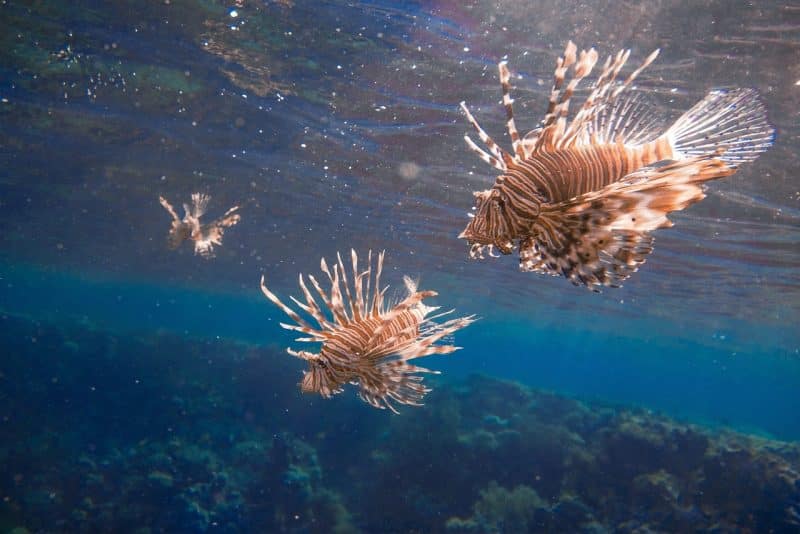
| Scientific Name | Scorpaenidae |
| Where It Lives | Indian, Atlantic and Pacific Oceans |
| What It Eats | Snails, fish, curstaceans |
| Conservation Status | Least Concern (LC) according to the IUCN Red List |
Fun Fact: Scorpion Fish have spines coated in venom; they are one of the most poisonous fish species in the world.
Scorpionfish are a large family of marine fish species that live in brackish and marine waters in the Indian, Atlantic and Pacific Oceans.
These fishes are brightly colored and very tiny – about eight to twelve inches long and weigh less than five pounds. Although small, these fish have a potent venom coating their sharp spines, making them one of the most poisonous ocean species in the world.
11. Sea Anemone
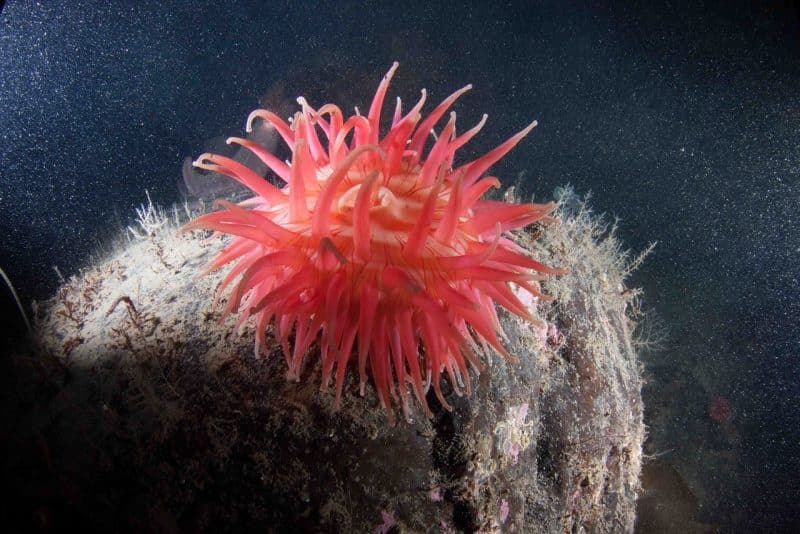
| Scientific Name | Actiniaria |
| Where It Lives | Worldwide |
| What It Eats | Small fish, shrimp |
| Conservation Status | Least Concern(LC) according to the IUCN Red List |
Fun Fact: Sea Anemone tentacles have venomous stings that are very poisonous.
There are over a thousand different sea anemone species, who mostly live in shallow waters of tropical oceans.
At first glance, you might think these creatures are plants, but they are in fact an extremely diverse animal species that can be seen in a wide array of colours. These predatory marine animals are attached to sea beds and unable to move. The tentacles we see on these animals expand to capture their prey and bring it to their mouths.
12. Sea Urchin
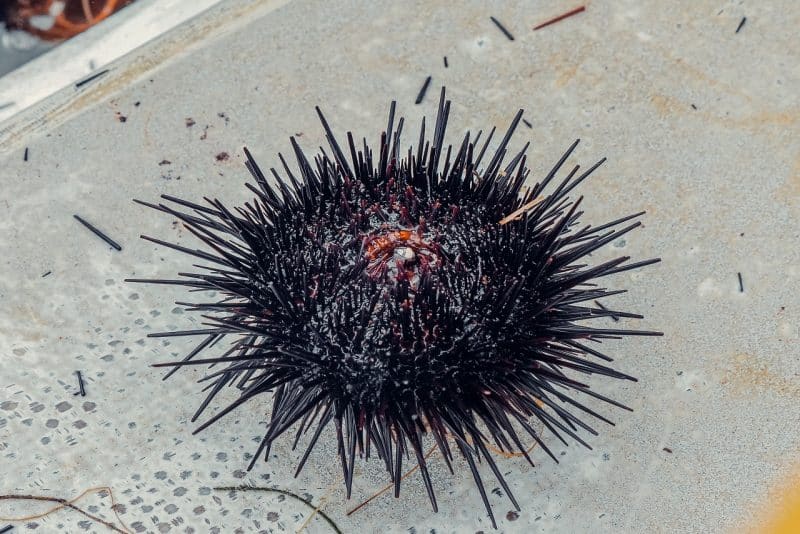
| Scientific Name | Echinoidea |
| Where It Lives | Worldwide |
| What It Eats | Fish, algae, barnacles, kelp |
| Conservation Status | Near Threatened (NT) according to the IUCN Red List |
Fun fact: Sea urchins can be found in every depth zone of the sea, from the seashores to deep lightless waters.
Sea urchins live in coral reefs and ocean floors around the world.
These spiny hedgehog lookalikes defend themselves from predators with their spiny shells – and any person who has ever had the misfortune of stepping on one knows how much they sting! These sea animals can live up to 200 years long and have a five-fold symmetry, very unusual in the animal kingdom!
13. Serval
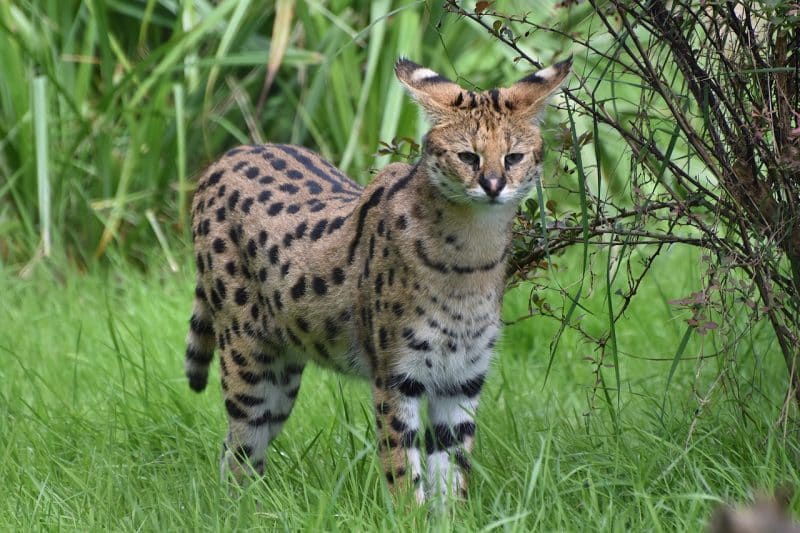
| Scientific Name | Leptailurus serval |
| Where It Lives | Africa |
| What It Eats | Rodents, small birds, frogs, reptiles, insects |
| Conservation Status | Least Concern (LC) according to the IUCN Red List |
Fun Fact: Servals are efficient hunters and may have an average success rate of 62%.
Servals are wild cats that are found in Sub-Saharan Africa. Where they live in semi-arid regions, forests, grasslands, and moorland areas. They prefer to be close to water and avoid completely arid regions.
These wild cats are active during both the day and night, and escape the midday heat by grooming themselves in the shade of bushes. These solitary animals keep to themselves and only interact with each other during mating season. Females are pregnant for two to three months and give birth to a litter of one to four babies in secluded places. The young are cared for by the mother, and are self-sufficient at around 1 year.
14. Sharp-tailed Snake
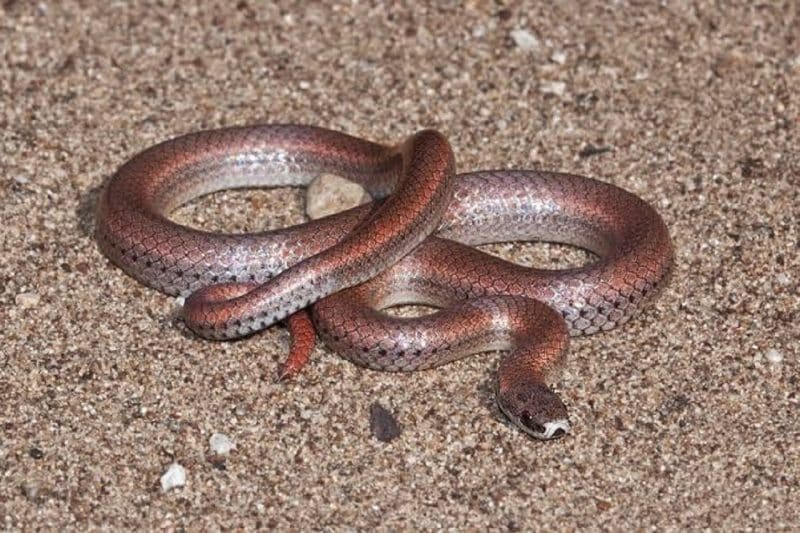
| Scientific Name | Contia tenuis |
| Where It Lives | United States, Canada |
| What It Eats | Slugs, eggs, insects |
| Conservation Status | Least Concern (LC) according to the IUCN Red List |
Fun Fact: The non-aggressive nature of these snakes makes people keep them as pets.
The Sharp-tailed Snake lives in oak woodland, chappal, meadows, forest edge, and pasture areas in the United States and Canada.
These non-venomous snakes have a series of sharp spines on their tails that they use to hold on to their slippery small prey, such as slugs. These solitary snakes are very shy and are not often encountered in the open. Sharp-tailed snakes are mostly active during the day and breed during the warmer months of spring and summer. The female lays her eggs underground or in burrows, and young hatchlings are only about 3 inches long!
15. Sixgill Shark
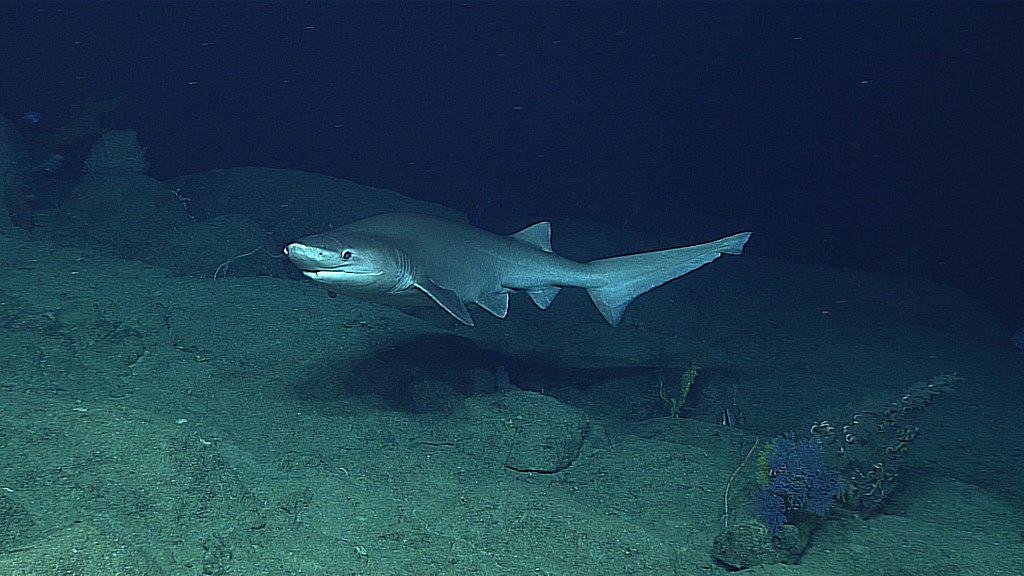
| Scientific Name | Hexanchus |
| Where It Lives | |
| What It Eats | Fish, crustaeans, rays, other sharks |
| Conservation Status | Near Threatened (NT) according to the IUCN Red List |
Fun Fact: Sixgill sharks are more buoyant than regular sharks.
There are 3 Sixgill sharks species that roam tropical and subtropical Oceans around the world today. It is believed that 8 other of their species is already extinct.
As their name suggests, Sixgill sharks have six pairs of gills instead of the normal five. These apex predators are believed to spend most of the day in deep waters and move to slightly shallower areas during the night.
16. Siamese Fighting Fish
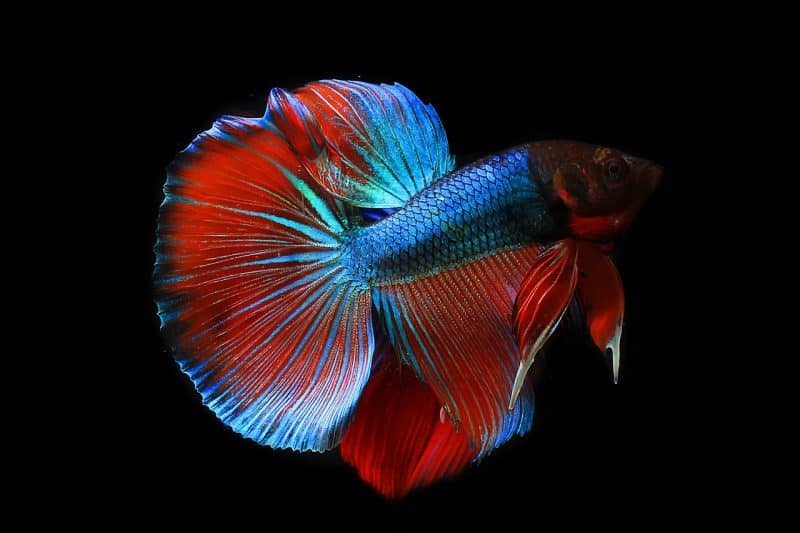
| Scientific Name | Betta splendens |
| Where It Lives | Asia |
| What It Eats | Plankton, larvae, crustaceans, shrimp, bloodworms |
| Conservation Status | Least Concern (LC) according to the IUCN Red List |
Fun Fact: Siamese Fighting Fishes have an organ that helps them breathe air from the surface directly.
The colorful Siamese Fighting Fish is a freshwater fish native to Cambodia, Thailand and Vietnam. But is also popularly kept as a pest due to its lively nature and striking colors.
Staying true to their name, these fish are very aggressive and territorial. Their long fins and bright colors help them attract breeding mates, who then perform a mating dance. The male creates a bubble nest to protect their eggs which normally spawn after 36 hours.
17. Sloth
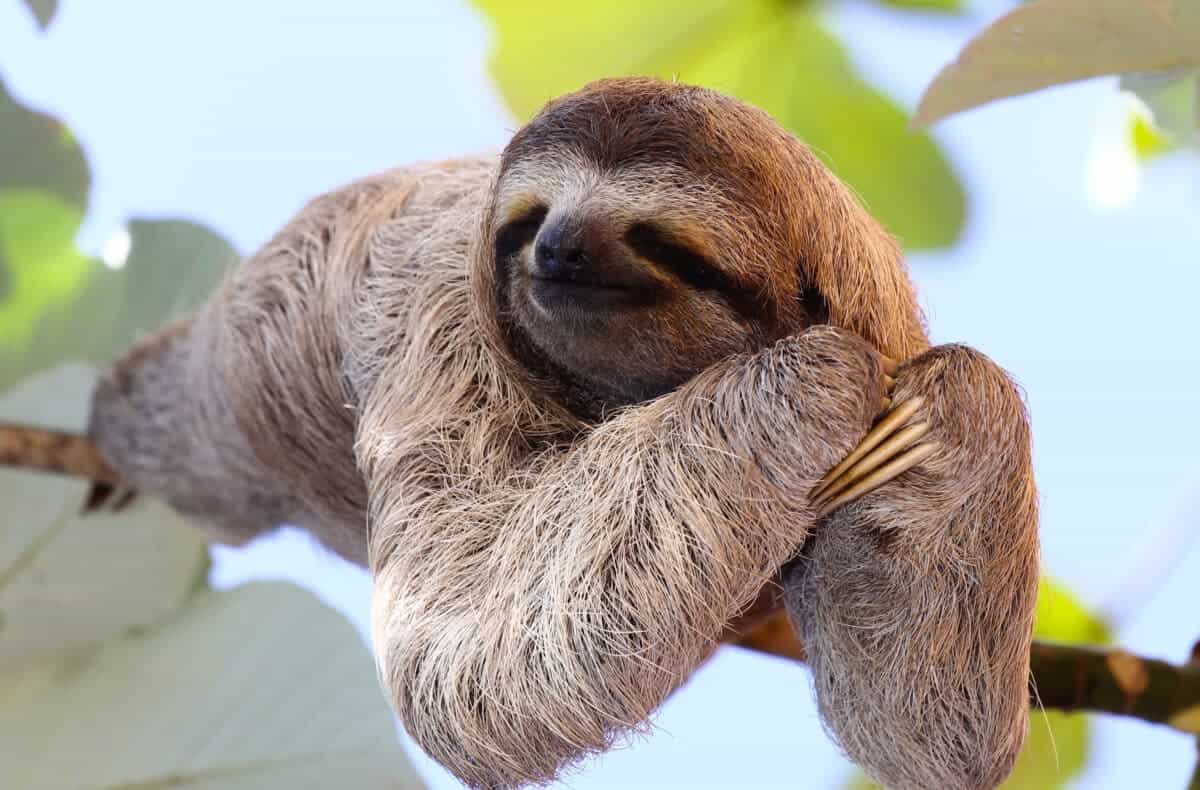
| Scientific Name | Choloepus Hoffmani |
| Where It Lives | Central, North and South America |
| What It Eats | Fruits, leaves |
| Conservation Status | Endangered (EN) according to the IUCN Red List |
Fun Fact: The sloth’s hair plays host to green algae that helps the sloth blend into the leaves.
The slow-moving sloth can be found in the treetops of tropical forests in Central, North and South America.
Not only do these animals move extremely slowly, they sleep up to 20 hours of the day! Spending most of their time in treetops, they only come down to the ground about once a week to relieve themselves. Surprisingly, sloths are incredible swimmers due to the length of their arms.
18. Snapping Turtle
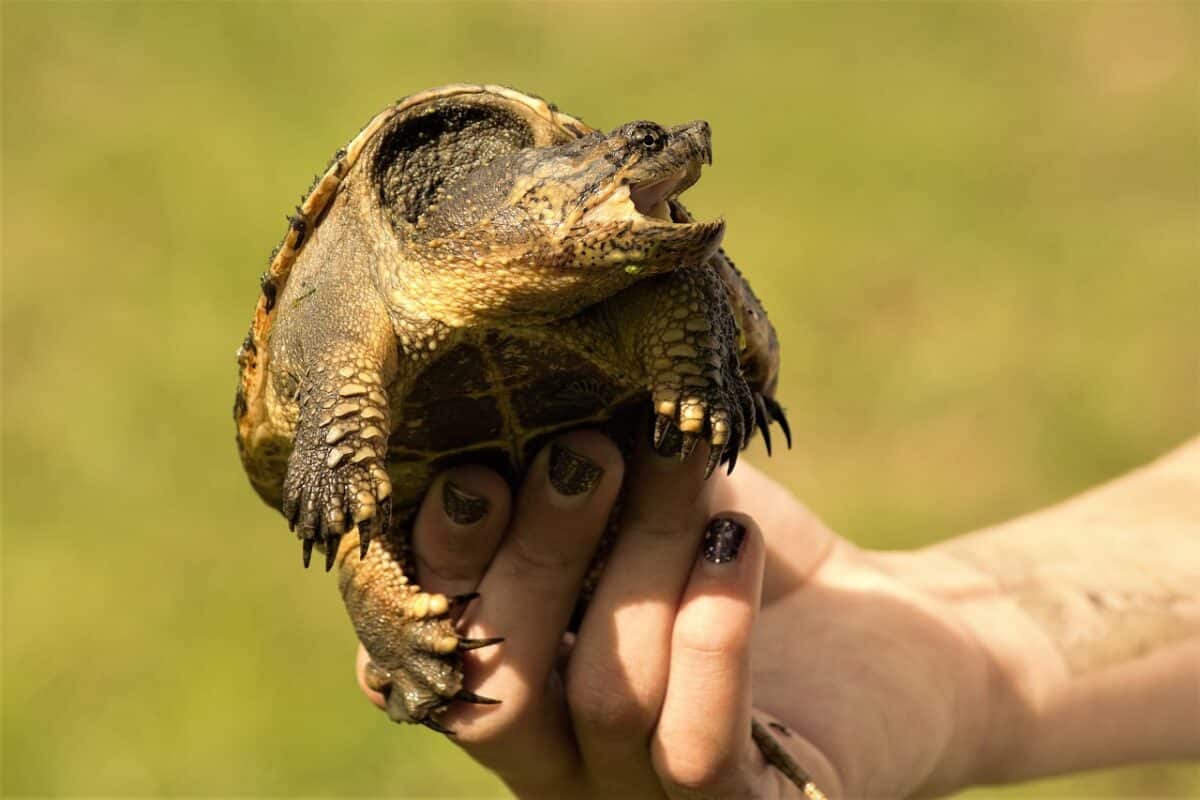
| Scientific Name | Chelydridae |
| Where It Lives | North America |
| What It Eats | Frogs, fisg, birds |
| Conservation Status | Least Concern (LC) according to the IUCN Red List |
Fun Fact: Snapping turtles cannot fit their entire bodies inside their shells.
Snapping turtles live in marshlands, slow lakes and rivers in North America and Canada.
Their webbed feet and strong muscles make swimming for these turtles easier, as they spend most of their lives in water. Although most of their time is spent swimming they can be seen baking on the edges of rivers or lakes. These aggressive turtles hunt at night and mostly live solitary lives.
19. Spadefoot Toad
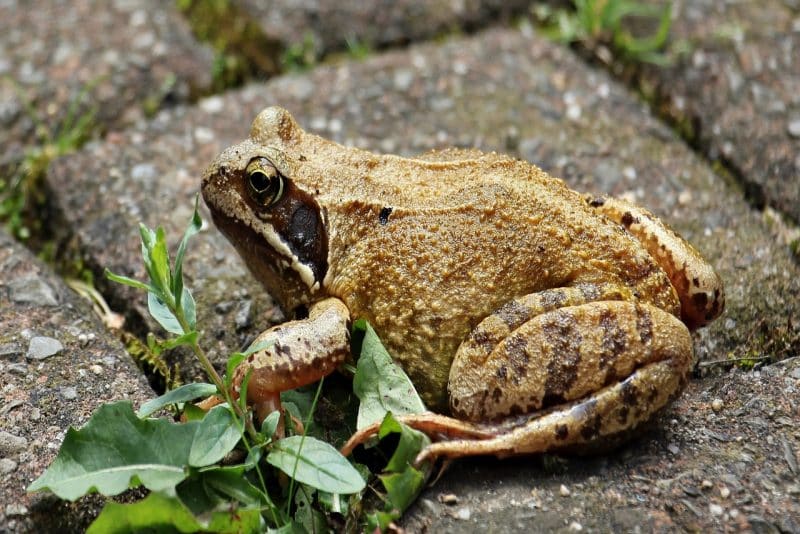
| Scientific Name | Mesobatrachia |
| Where It Lives | Europe, North America |
| What It Eats | Insects |
| Conservation Status | Least Concern (LC) according to the IUCN Red List |
Fun Fact: During extremely dry months, the toad can wrap its dead skin around it for insulation.
The Spadefoot Toad is found in many places in North America and Europe. But seeing one would be rare, as this unusual amphibian spends most of its life underground.
These elusive creatures can be identified by their round bodies, short snouts and bulging eyeballs. Spadefoot toads are not rushed to mate, some even going years without mating! But when they do, they use explosive breeding – fully completing their breeding process in a matter of days or weeks!
20. Striped Rocket Frog
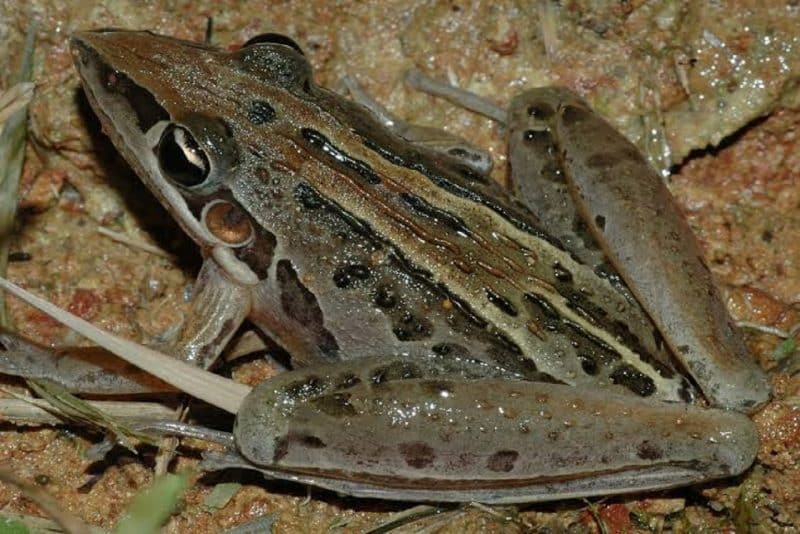
| Scientific Name | Litoria nasuta |
| Where It Lives | Indonesia, Australia, Papua New Guinea |
| What It Eats | Insects |
| Conservation Status | Least Concern (LC) according to the IUCN Red List |
Fun Fact: The Striped Rocket Frog can cover a distance of nearly thirty-six times its length in a single jump.
The Striped Rocket frog lives in coastal, swamp, ponds, open woodland, and lowland areas Australia, Papa New Guinea and Indonesia.
These frogs, also referred to just as rocket frogs, have exceptionally long legs and a streamlined body. This enables the amphibian to make giant leaps as far as 6.5 feet! Which is about 36 times the length of its body. These frogs live mostly on the ground, as their tree-climbing ability is reduced due to their small disc sizes. Breeding males have a yellow throat, and they spend the months from spring through to early autumn calling loudly for a potential mate.
Summary of Animals that Start with S
And we’ve come to the end of the list. We hope you loved learning more about animals that start with the letter S! Now it’s time to find out all about animals that start with I in this post.
Get the full A-Z Animal Alphabet List here:
- Animals That Start With A
- Animals That Start With B
- Animals That Start With C
- Animals That Start With D
- Animals That Start With E
- Animals That Start With F
- Animals That Start With G
- Animals That Start With H
- Animals That Start With I
- Animals That Start With J
- Animals That Start With K
- Animals That Start With L
- Animals That Start With M
- Animals That Start With N
- Animals That Start With O
- Animals That Start With P
- Animals That Start With Q
- Animals That Start With R
- Animals That Start With T
- Animals That Start With U
- Animals That Start With V
- Animals That Start With W
- Animals That Start With X
- Animals That Start With Y
- Animals That Start With Z
- Wildlife of Sweden - April 19, 2024
- The 4 Best Places to See Jaguars - April 19, 2024
- Where to see the Big 5 of India - April 18, 2024

